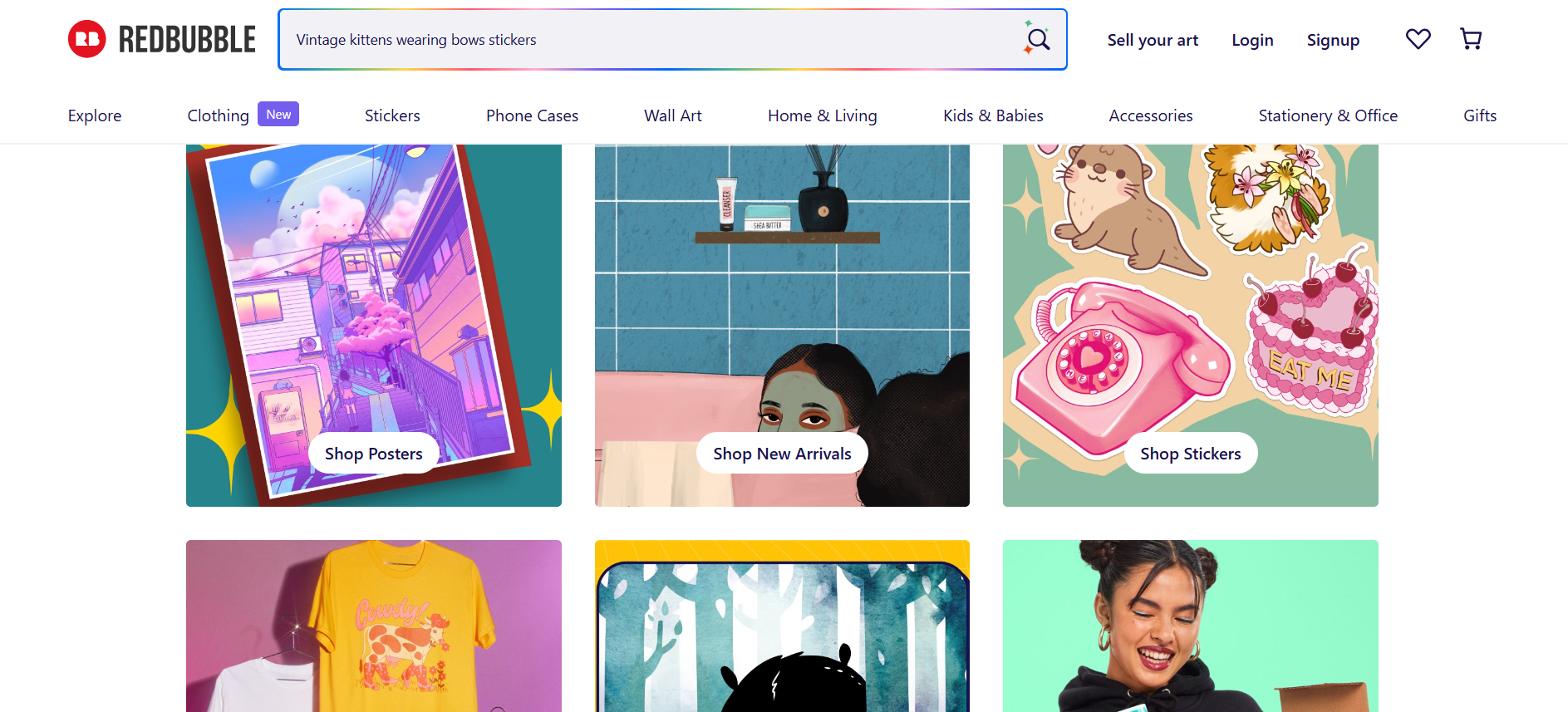Redbubble
Redbubble is one of the OG print-on-demand marketplaces, where thousands of artists upload designs and Redbubble handles production, shipping, and customer support. Because it’s a marketplace (not just a fulfillment provider), your designs can get discovered by shoppers browsing Redbubble itself. But it has trade-offs: print quality can vary, margins are less flexible, and you’re limited to their platform. In the sections below, you’ll find how Redbubble works, pros & cons, best practices, and how to maximize your chances of sales on Redbubble.
How Redbubble Works
Redbubble is a print-on-demand marketplace. You upload designs, choose which products to enable, set your artist margin, and publish. When a shopper buys, Redbubble routes the order to a manufacturing partner near the customer, handles payment, printing, shipping, returns, and customer support. You don’t manage inventory or printers—your job is design and discovery.
Cost: No monthly fee
Payout: Monthly (artist margin)
Control: Titles, tags, descriptions, margin
Regions: Global manufacturing network
Traffic Source: Marketplace search + external promo
Key Features
Artist Margin
Set your markup per product type. Redbubble shows a base price; your margin is added on top.
Easy Publishing
Upload one design and enable dozens of products with previews, scaling, and positioning tools.
Built-in Audience
Products can be discovered via Redbubble’s own browse & search without your own storefront.
Pros & Cons
Pros
- No monthly fees or inventory risk
- Marketplace discovery (organic traffic possible)
- Hands-off fulfillment, shipping, and support
- Wide product range; fast to publish lots of SKUs
Cons
- Margins can be tight on some products
- Quality may vary by manufacturing partner—order samples
- High competition; strong SEO/tags needed
- Less control over packaging & customer experience
Best For
Designers and illustrators who prefer a simple, low-overhead route to test niches and earn passively, and who are comfortable optimizing titles/tags while promoting via social o
